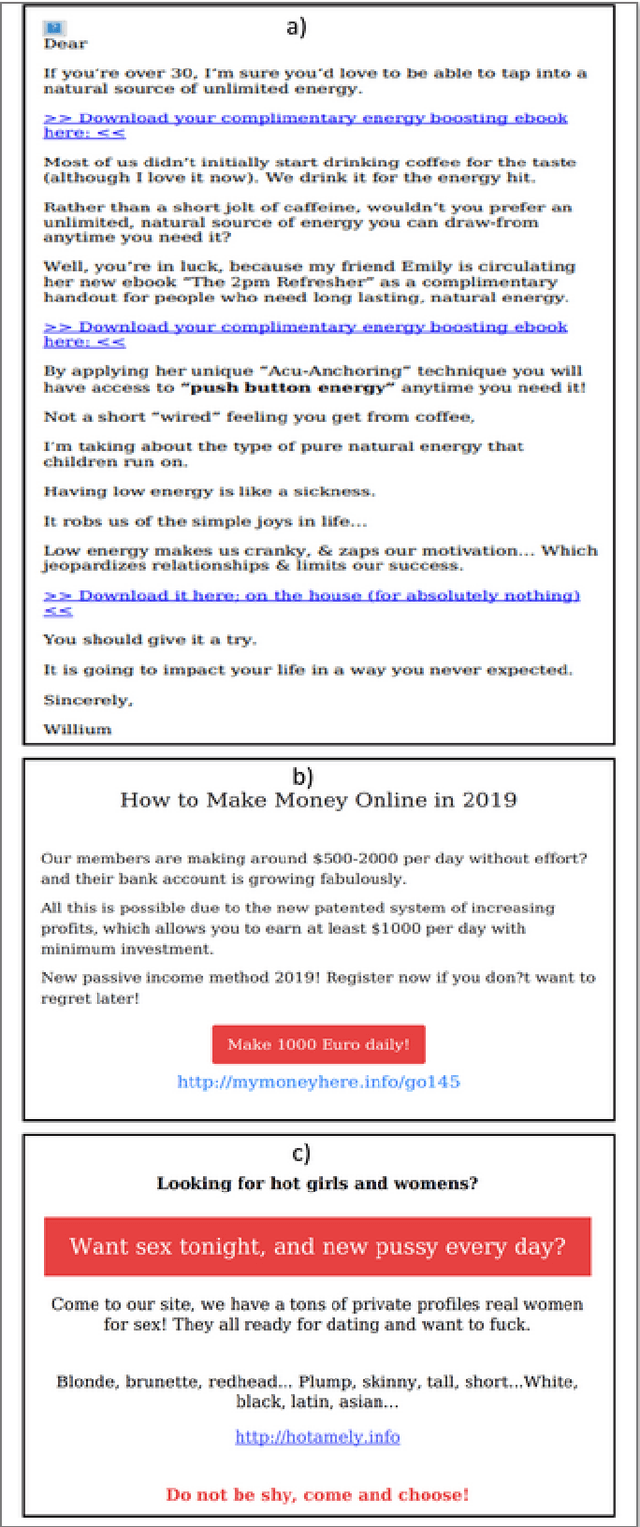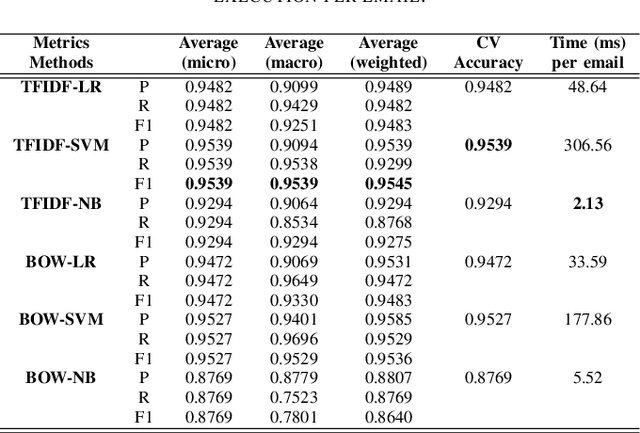Classification of Spam Emails through Hierarchical Clustering and Supervised Learning
Paper and Code
May 28, 2020



Spammers take advantage of email popularity to send indiscriminately unsolicited emails. Although researchers and organizations continuously develop anti-spam filters based on binary classification, spammers bypass them through new strategies, like word obfuscation or image-based spam. For the first time in literature, we propose to classify spam email in categories to improve the handle of already detected spam emails, instead of just using a binary model. First, we applied a hierarchical clustering algorithm to create SPEMC-$11$K (SPam EMail Classification), the first multi-class dataset, which contains three types of spam emails: Health and Technology, Personal Scams, and Sexual Content. Then, we used SPEMC-$11$K to evaluate the combination of TF-IDF and BOW encodings with Na\"ive Bayes, Decision Trees and SVM classifiers. Finally, we recommend for the task of multi-class spam classification the use of (i) TF-IDF combined with SVM for the best micro F1 score performance, $95.39\%$, and (ii) TD-IDF along with NB for the fastest spam classification, analyzing an email in $2.13$ms.
 Add to Chrome
Add to Chrome Add to Firefox
Add to Firefox Add to Edge
Add to Edge